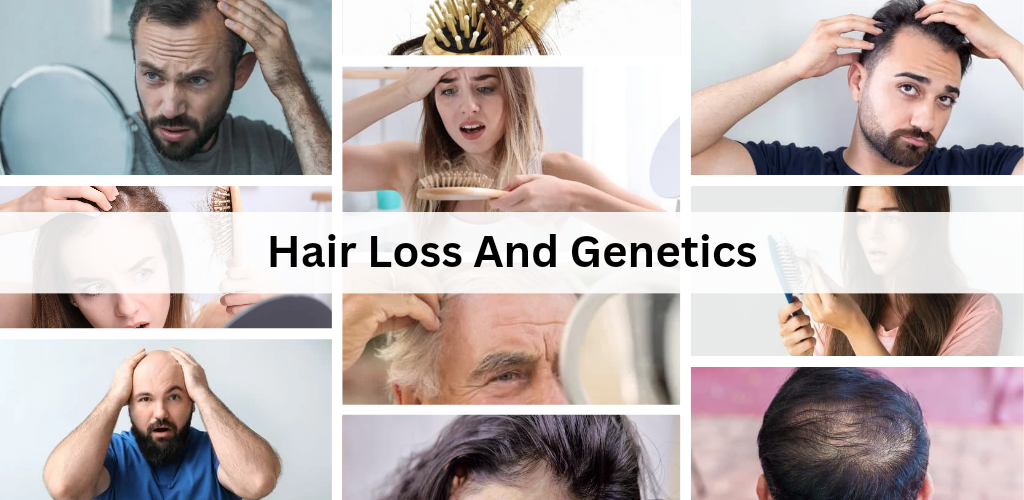Hair loss, also known as alopecia, is a common condition that affects millions of men and women worldwide. Genetics play a significant role in hair loss, but other factors such as stress, hormonal changes, and certain medications can also contribute to the condition. In this blog post, we will explore the genetics of hair loss, including the genes involved, inheritance patterns, and the impact of genetics on hair loss, as well as other factors that can contribute to hair loss.
The Genetics of Hair Loss
Several genes have been identified as associated with male and female pattern baldness. For male pattern baldness, the androgen receptor gene and the aromatase gene are involved in testosterone and estrogen metabolism. Female pattern baldness is less well understood but is thought to involve a complex interplay of genetic and environmental factors. Hair structure genes also play a significant role in determining the size, shape, and texture of hair, and mutations in these genes can cause hair loss or other hair disorders.
Inheritance Patterns
Hair loss can be inherited from both the mother’s and father’s sides of the family. The inheritance pattern of alopecia areata, the most common type of hair loss, is unclear because multiple genetic and environmental factors are involved. A history of baldness on either side of the family increases the risk of balding.
Male Baldness and the Mother’s Side
Although it is not commonly believed that men inherit the gene for baldness solely from their mother’s father, there is some truth to it. The genetic component of male pattern baldness is not yet fully understood, but it is thought to be influenced by both the X and Y chromosomes. The X chromosome has been found to have stronger signals for hair loss, with the transcription factor complex gene set (ALX4) being one of the most significant associated regions.
The Balding Gene
The term “balding gene” is often misunderstood, as it is not a single gene that causes hair loss. Hair loss is influenced by multiple genes and their interactions, making it a complex genetic issue. The most significant gene set associated with hair loss is GO:0005667, which corresponds to the transcription factor complex gene set, including the gene ALX4.
Treatment and Prevention
While genetic hair loss cannot be reversed, there are ways to slow down the process and maximize hair growth potential. Healthy lifestyle habits, such as eating a balanced diet, getting adequate sleep, minimizing stress, and exercising regularly, can help support overall health and hair health. Topical medications like minoxidil (Rogaine) and oral medications are often the first line of treatment for hair loss.
In conclusion, hair loss is a complex condition influenced by genetics, hormonal changes, stress, and other environmental factors. By understanding the genetics of hair loss and the factors that contribute to it, we can develop more effective treatments and strategies to manage this common condition.
Citations:
[1] https://medicover-genetics.com/the-genetics-of-hair-loss-alopecia-and-more/?amp=1
[2] https://www.aad.org/public/diseases/hair-loss/types/alopecia/causes
[3] https://www.mayoclinic.org/diseases-conditions/hair-loss/symptoms-causes/syc-20372926
[4] https://www.healthline.com/health/baldness-gene
[5] https://medlineplus.gov/genetics/condition/alopecia-areata/
[6] https://pubmed.ncbi.nlm.nih.gov/15237265/
[7] https://www.ncbi.nlm.nih.gov/pmc/articles/PMC5308812/
[8] https://www.naaf.org/faqs/
[9] https://newsnetwork.mayoclinic.org/discussion/history-of-baldness-on-either-side-of-family-increases-risk-of-balding/





I found this article to be an excellent resource for understanding the intricate genetic factors involved in hair loss. This guide will undoubtedly aid dermatologists in providing more personalized and targeted treatments for patients struggling with hair loss.